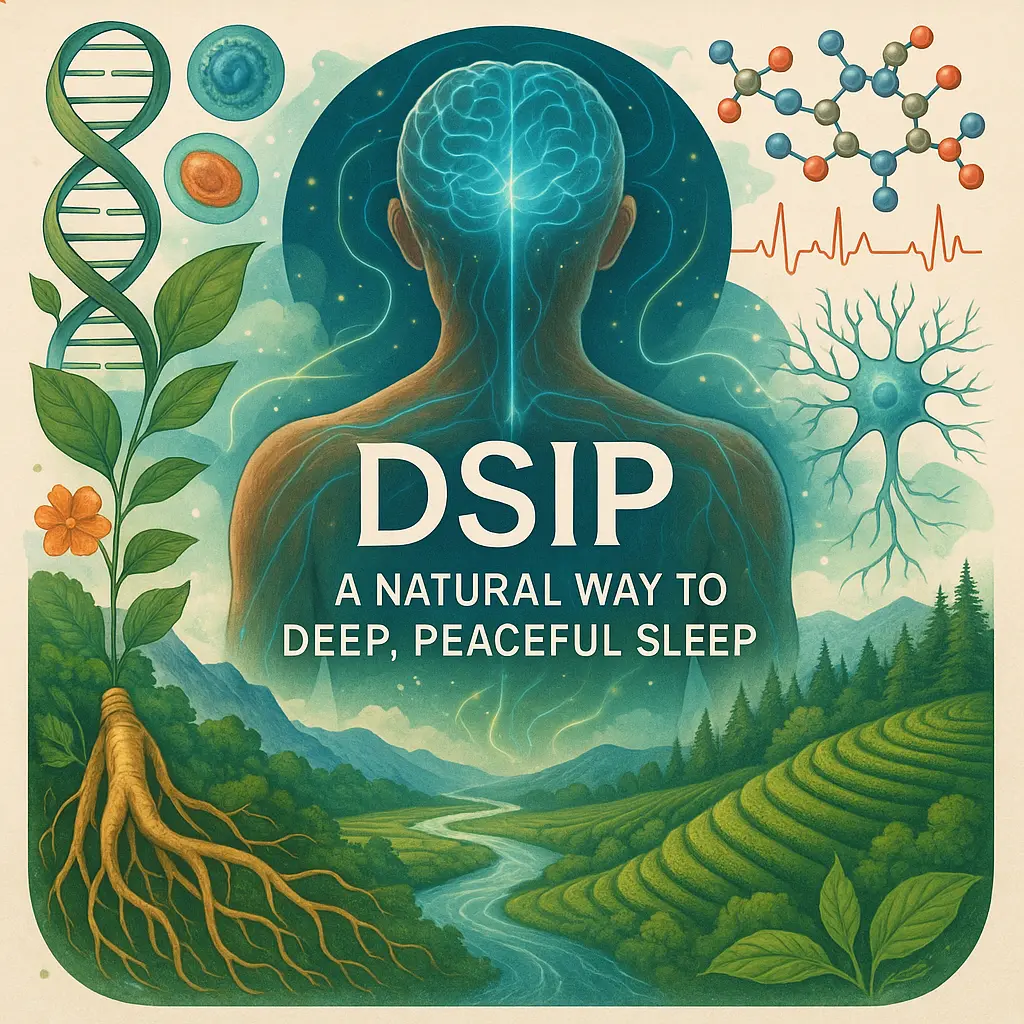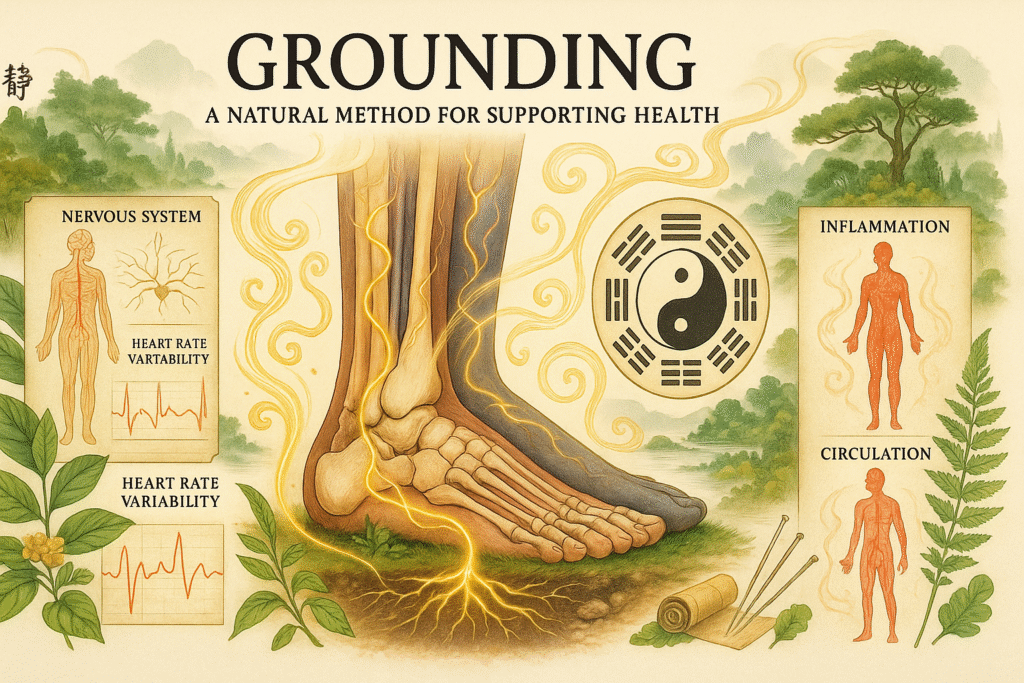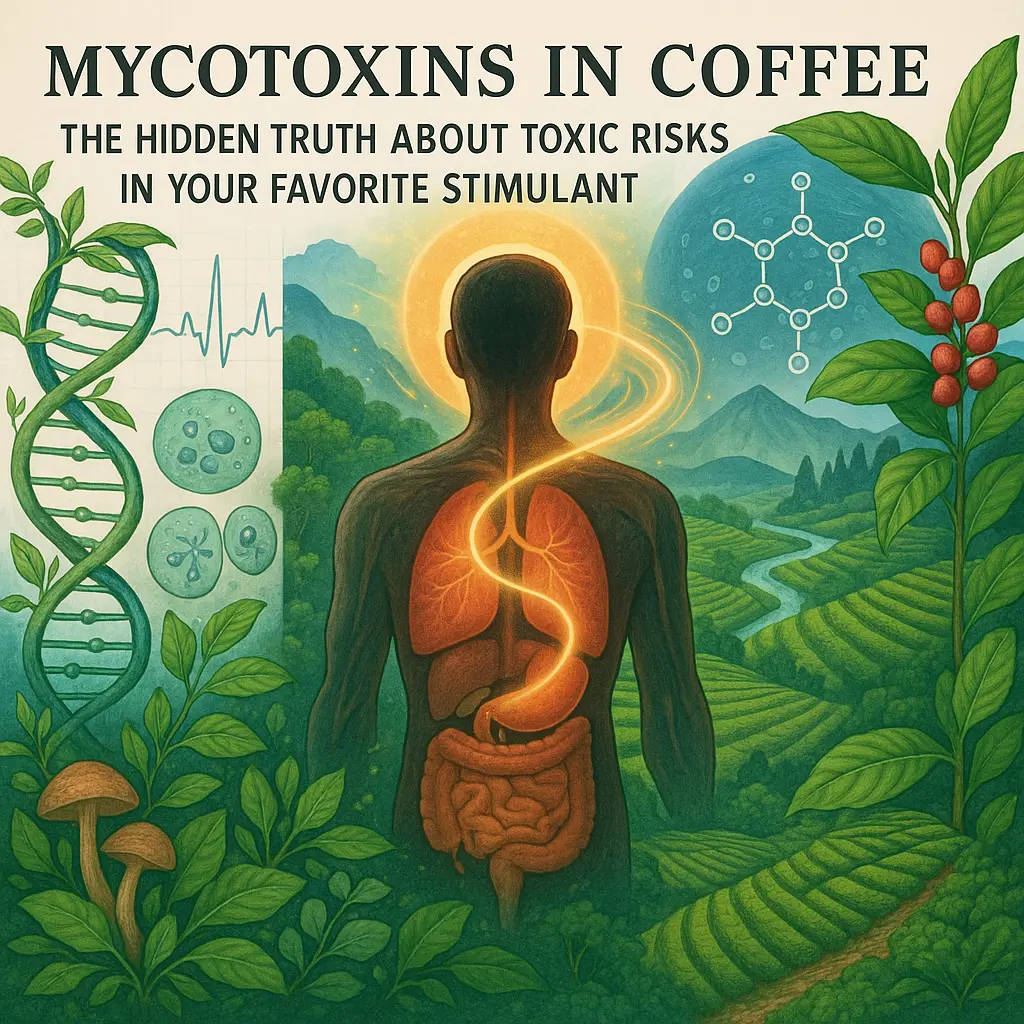🌙 Regulate Your Sleep and Reclaim Peace with the DSIP Peptide
🌟 Introduction
Welcome to the Awakened Health blog. Today we’ll discuss sleep problems affecting millions worldwide and explore DSIP—a peptide that can help the body restore its natural ability to fall asleep and achieve deep recovery. This discovery has transformed our understanding of sleep mechanisms and continues to captivate scientists globally.
Imagine going to bed but sleep doesn’t come. Instead of rest, you experience a racing mind, tossing and turning, staring at the ceiling for hours. Or another scenario: you finally fall asleep only to wake up at 3:00 AM, unable to sleep again. Does that sound familiar?
You are not alone. Hundreds of thousands worldwide report sleep issues online, with studies showing that this phenomenon affects virtually all age groups.
- Insomnia is the most common issue—difficulty falling asleep, frequent nighttime awakenings, or waking up too early.
- “Racing mind” is another frequent complaint, especially after stressful days.
- Others struggle with sleep apnea or restless legs syndrome, which physically prevent restful sleep.
📊 Statistics are alarming: 64% of Americans and 46% of Europeans regularly use sleep aids—from melatonin and supplements to prescription medications. Yet, the quality of recovery decreases decade after decade.
✈️ Then there’s jet lag—a problem all frequent travelers know too well. Your biological clock says it’s midday, but your watch shows midnight. You lie in bed, exhausted from travel, but your body refuses to cooperate. This is a classic example of how easily the natural sleep rhythm can be disrupted.
👉 If this sounds like you, this article is for you. I’ll show you how the DSIP peptide works, potentially helping your body regain its natural ability to enter deep, restorative sleep.
🔍 What You’ll Find in This Article
Discover the wonders of the DSIP peptide – a natural substance produced by your body. However, its effectiveness can be disrupted by stress, an irregular lifestyle, and chronic fatigue.
You’ll uncover the fascinating story of how this peptide was discovered by Swiss scientists in the 1970s – a true detective tale that spanned nearly 15 years.
Understand how DSIP supports the natural switch of the nervous system from “alert” mode to “regeneration” mode. Most importantly, you’ll receive practical tips on how to support this process naturally.
📑 Table of Contents
- Fascinating Discovery of DSIP – 15 Years of Research
- How DSIP Helps Switch Modes in the Body
- What Recent Research Says
- Practical Ways to Support Natural Regeneration
- My Experience with Restoring Natural Sleep Rhythm
- Frequently Asked Questions
- Next Steps
📚 The Fascinating History of Discovering DSIP – 15 Years of Detective Work
🧪 1963 – The Start of a Scientific Obsession
The story of the DSIP peptide began in 1963 in the laboratory of Professor Marcel Monnier at the University of Basel, Switzerland. Monnier posed a question that sounded like science fiction:
“Can sleep be transferred from one animal to another?”
🐰 The First Experiments – Dialysis of Sleeping Rabbits’ Blood
Monnier’s team constructed a special device.
- First, they put rabbits to sleep by electrically stimulating specific parts of their brains.
- Then, they extracted blood from the sleeping animals’ brain veins and passed it through a filter (dialyzer).
➡️ The effect was astounding: when this “filtered blood” was injected into awake rabbits, they instantly fell into a deep sleep!
🔬 1963–1970 – The Search for the “Sleep Substance”
Over the next seven years, the team attempted to discover what exactly in the blood induced sleep.
🧠 How the DSIP Peptide Helps Switch Modes in the Body
- They understood it had to be a small molecule – as it passed through the dialyzer.
- They experimented with various purification methods, but often lost the substance’s activity or had too little for research.
It was a time of frustration but also growing determination. The quest for understanding how the DSIP peptide worked for sleep pushed the team forward.
⚡ 1970–1974 – Technological Breakthrough
Professor Georg Alexander Schoenenberger joined the team, introducing new peptide separation techniques.
💡 This allowed them to isolate sufficient quantities for chemical analysis for the first time.
🏷️ 1974 – First Isolation and Naming
In 1974, researchers successfully isolated the pure substance from the venous blood of rabbits in deep sleep. They named it:
DSIP – Delta Sleep-Inducing Peptide (Delta Sleep-Inducing Peptide).
🧬 1977 – Complete Resolution of the Structure Mystery
After years of effort, it was discovered that DSIP is a peptide composed of 9 amino acids:
👉 Trp–Ala–Gly–Gly–Asp–Ala–Ser–Gly–Glu
For the first time, scientists synthesized DSIP in the laboratory and… the effect was identical to that in nature. 💤
📈 The EEG showed an average increase in delta wave activity by 35% compared to the control group. Sleep quality improvement was evident.
🌍 Why Was This Discovery Revolutionary?
For the first time in history, it was proven that sleep has its own “chemistry” – there exists a specific substance that can control it. This opened up entirely new research areas on sleep quality improvement and circadian rhythm regulation.
❓ The Biggest Mystery to This Day
Even after more than 40 years since its discovery:
- the DSIP gene has not been found,
- its protein precursor has not been identified,
- nor has a specific receptor been pinpointed.
🔮 DSIP remains one of the most enigmatic peptides in neurobiology.
Imagine Your Brain as a Car with Two Driving Modes
Picture your brain like a car that has two driving modes:
🚗 “Sport” Mode (Fight-or-Flight): high adrenaline levels, quick reactions, and a body that’s constantly on alert.
🚙 “Eco” Mode (Rest-and-Rejuvenate): slower pace, energy saving, and repair processes.
The problem is, most of us are stuck in “Sport” Mode all day long.
🔄 DSIP as the Natural “Mode Switcher”
The DSIP peptide serves as an intelligent system in your brain, knowing when it’s time to shift gears. This small peptide, made up of 9 amino acids, influences several key processes at the same time:
💬 Peptide = Message
Think of DSIP as an SMS sent between your cells – brief but highly specific instructions.
🌊 What Exactly Does DSIP Do in the Brain?
- Alters Brainwave Frequencies
During stress, the brain produces fast beta waves (15–30 Hz).
DSIP helps transition to delta waves (0.5–4 Hz) – these are deep, slow sleep waves responsible for restoration. - 🎛️ Regulates the “Calm Chemistry”
DSIP supports the action of GABA – the most important calming neurotransmitter.
👉 More GABA means a greater sense of peace and relaxation. - ⏰ Synchronizes the Biological Clock
DSIP impacts the hypothalamus – the brain’s central clock that regulates the circadian rhythm.
✨ The Domino Effect
When the DSIP peptide starts working, it triggers a cascade of beneficial changes:
- 📉 Cortisol levels (stress hormone) decrease,
- 📈 Growth hormone increases (tissue repair and regeneration),
- 🛡️ Immunity improves,
- 🌡️ Body temperature stabilizes.
🧪 Insights from the Latest Research
This is not just another “sleep pill.” The DSIP peptide helps the body return to its natural rhythm and restores balance between wakefulness and regeneration.
📊 First Human Trials – Groundbreaking Discoveries
In the 1980s, Schneider-Helmert and colleagues conducted the first DSIP peptide study on humans. 👥 Six healthy volunteers received a 25 nmol/kg intravenous dose in the morning.
➡️ The results were surprising: participants almost immediately reported a sensation of drowsiness, and total sleep time increased by 59% within 130 minutes post-administration compared to the placebo.
🤔 What Surprised Researchers the Most?
Despite its clear impact on sleep, detailed EEG analyses did not show typical “pharmacological sedation” associated with drugs. Researchers suggested that the DSIP peptide supports natural sleep functions rather than forcing them.
🧩 Stability of DSIP in the Body
The greatest challenge is its short lifespan.
- In in vitro studies, its half-life was only shown to be about 15 minutes.
- A specific enzyme similar to aminopeptidase is responsible for this.
👉 This explains why the natural production of the DSIP peptide can be easily disrupted by stress, irregular lifestyle, or aging.
🧪 Contemporary Research on DSIP Analogs
Later experiments showed that synthetic DSIP analogs (not DSIP itself!) can significantly support slow-wave sleep in rabbits and rats.
Current research focuses on:
- 🧠 the impact of the DSIP peptide on neuroplasticity and neuron regeneration,
- 🌡️ its role in regulating body temperature and metabolism,
- 😴 potential use in treating stress-related sleep disorders.
⚠️ Research Limitations
🌱 Practical Options for Supporting Regeneration
There are two main pathways to support processes related to the DSIP peptide:
1️⃣ Synthetic DSIP – Direct Support for Regeneration
For individuals dealing with chronic sleep problems and regeneration, synthetic DSIP may offer additional support. Research and user experiences suggest that it can help with faster sleep onset and deeper nighttime recovery.
📌 Practical Information on DSIP:
- 🔬 Form and Availability: synthetic peptide available as subcutaneous injections. Amino acid sequence: Trp–Ala–Gly–Gly–Asp–Ala–Ser–Gly–Glu.
- 💉 Typical DSIP Dosage: in clinical studies, 25 nmol/kg body weight was administered intravenously in the morning. Currently, users opt for doses of 100–500 mcg subcutaneously in the evening.
- ⏰ Duration of Action: initial effects may be felt within a few minutes of use. Optimal results appear after 2–4 weeks of regular use.
⚠️ Important Safety Considerations:
- ⏳ Stability: DSIP has a short half-life (~15 minutes), necessitating regular administration.
- 🧾 Product Quality: lack of regulation means DSIP quality can vary between suppliers. It is advisable to choose renowned laboratories with Certificates of Analysis (CoA).
- ☕ Interactions: caffeine significantly weakens the effects of DSIP. It is recommended to limit its intake to one cup in the morning.
2️⃣ Natural Support for Circadian Rhythms – Long-Term Strategy
Understanding Natural Cycles to Maximize DSIP Effects
Understanding natural cycles of regeneration can help maximize the effects of the DSIP peptide and foster healthy sleep habits.
🌅 Light Rhythm Regulation – The Most Powerful Regulator
Morning (6:00–8:00):
- Spend 10–15 minutes in daylight within the first hour after waking.
- Sunlight regulates evening melatonin production, crucial for balancing the circadian rhythm.
- If sunlight is insufficient, use a light therapy lamp (10,000 lux).
Evening (19:00–22:00):
- Gradually decrease the intensity of light at home.
- Avoid blue light from screens (phone, computer, TV) to aid sleep quality improvement.
- Use blue light-blocking glasses or apps (e.g., f.lux).
🍽️ Food and Caffeine – Conscious Management
- Have your last meal at least 3 hours before sleeping to support circadian rhythm regulation.
- Magnesium (200–400 mg) – supports muscle relaxation, which can enhance how DSIP peptide works for sleep.
- Glycine (1–3 g) – a natural amino acid that facilitates falling asleep.
☕ Caffeine – The Hidden Sleep Saboteur:
- Last coffee by 2 PM to avoid disrupting evening sleep quality.
- Drinking coffee after 4 PM can affect your ability to fall asleep by 11 PM.
💤 Thermoregulation – An Undervalued Element of Recovery
- Ideal bedroom temperature: 18–20°C – crucial for optimizing peptides for insomnia effects.
- A hot shower or bath 1–2 hours before sleep allows your body to cool down afterward, aiding in easier sleep initiation and potentially improving DSIP peptide benefits.
- Opt for cool sheets and pillows to support better sleep quality.
🧘 Switching Nervous System Techniques
4–7–8 Breathing Technique (Quick Method):
- Inhale through the nose for 4 seconds.
- Hold your breath for 7 seconds.
- Exhale slowly through the mouth for 8 seconds.
- Repeat 4 times.
Progressive Muscle Relaxation:
- Tense your feet for 5 seconds → then relax.
- Gradually move up through the body. 👉 This helps “teach” the nervous system to activate relaxation mode.
⚠️ Common Mistakes Destroying Recovery
- ❌ “Catching up” on sleep during weekends – disrupts the biological rhythm.
- ❌ Intense workouts after 7 PM – increase body temperature and cortisol.
- ❌ Alcohol “for sleep” – may make you fall asleep faster but worsens sleep quality by reducing REM phase.
- ❌ Scrolling on your phone in bed – blue light and information stress.
🔄 “Circadian Rhythm Reset” Protocol (First 2 Weeks)
- ⏰ Consistent wake-up time – even on weekends (difference maximum 30 minutes).
- 🌞 Sunlight exposure within 30 minutes after waking up.
- ☕ Last caffeine intake by 2 PM.
- 🌙 Evening ritual at the same time each day.
- 🛏️ Bedroom temperature below 20°C.
📌 After 2 weeks, most people notice a significant improvement in sleep quality and morning energy.
💭 My Experience with DSIP – Discovering the Importance of Tranquility
Overcoming Sleep Deprivation: My Battle Against Hidden Mold and Toxins
After many months of battling hidden mold and toxins that weighed down my body, I was unable to switch into recovery mode. I was constantly jittery, found it difficult to concentrate, and above all, felt that I was not resting – even while lying in bed.
🌙 The Breakthrough with the DSIP Peptide
After beginning to support natural processes related to the DSIP peptide, I noticed that:
- I fell asleep much faster,
- my sleep was deeper,
- and most importantly – I woke up genuinely refreshed.
I also experienced a sense of inner peace, which extended into everyday situations.
🔎 A Surprising Discovery
I began to recognize what disrupts this state of peace. When I drank two coffees a day, I reverted to stress mode. The DSIP peptide helped me transition into recovery, but the effect lasted only when I didn’t sabotage it with caffeine.
🧘 Making Peace of Mind My Priority
I realized that peace is not passivity – it is the ideal state of mind for decision-making and facing challenges. Thanks to this, I was in the best mental and physical condition.
📈 Observations from the First 3 Months
- Weeks 1–2: falling asleep reduced from 45–60 minutes to 10–15 minutes,
- Weeks 3–4: deeper sleep with fewer awakenings at night,
- Weeks 5–8: mornings without “brain fog,” better concentration,
- Weeks 9–12: more peace in stressful situations and better decisions.
⭐ Key Observation
The DSIP peptide played a crucial role in improving my sleep quality and regulating my circadian rhythm, making it a vital part of my journey toward overcoming insomnia.
❓ Frequently Asked Questions
DSIP is not a “sleep pill”. It’s about restoring the body’s natural ability to switch between wakefulness and recovery.
When I began to see recovery support as a long-term investment in life quality rather than a quick fix for insomnia, the effects were much deeper and more lasting.
⏰ How much time is needed to “reset” the circadian rhythm?
Based on studies of jet lag and shift work, the body needs about 1 day for each hour of rhythm change. 👉 However, with a consistent approach, you can notice initial sleep quality improvement within 10–14 days.
😴 Do sleep problems always indicate an issue with DSIP?
No. Sleep disorders can have dozens of causes—from magnesium deficiency to chronic stress or sleep apnea. DSIP is just one element of the complex sleep and wakefulness regulation system.
☕ Why does caffeine impact sleep so much, even if I drink it in the morning?
Caffeine blocks adenosine receptors—a substance responsible for the feeling of tiredness. 🕓 Its half-life is 5–6 hours, so coffee consumed at 4 PM can still be active at 25% efficiency by 10 PM.
✨ Next Steps
📌 Key Insights
DSIP is a fascinating peptide that demonstrates how elegant and intricate the sleep regulation system in our body is. Although it can’t be easily supplemented, you can create conditions that favor its natural actions.
🔄 Start with one change per week:
- Week 1: Set a consistent waking time (even on weekends),
- Week 2: Add 15 minutes of morning sunlight exposure,
- Week 3: Move your last coffee to a maximum of 2 PM or eliminate it entirely; try alternatives (ginseng, maca root, dang shen – Codonopsis),
- Week 4: Introduce a 30-minute wind-down ritual before sleep.
📚 Related Topics to Explore
- How chronic stress destroys natural recovery processes,
- The role of magnesium in sleep quality and muscle recovery,
- The impact of body temperature on circadian rhythm regulation.
🛌 Remember
Good sleep is not a luxury, but the foundation of health.
Your body has built-in recovery mechanisms – sometimes it just needs a little help to activate them again. 🌙
Legal Note: All content provided on this site is for informational purposes only and does not constitute medical advice. It should not replace consultations or treatments provided by a doctor or other qualified healthcare professional.


